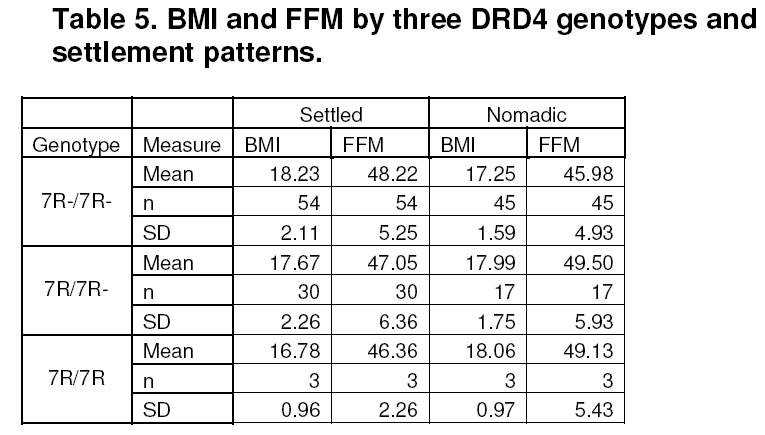|
Monday, June 09, 2008
Update: Here's the paper, Dopamine receptor genetic polymorphisms and body composition in undernourished pastoralists: An exploration of nutrition indices among nomadic and recently settled Ariaal men of northern Kenya. I've put the most relevant figure below the fold.
Is ADHD An Advantage For Nomadic Tribesmen?: While those with the DRD4/7R allele were better nourished in the nomadic population, they were less well-nourished in the settled population. Although the effects of different versions of dopamine genes have already been studied in industrialized countries, very little research has been carried out in non-industrial, subsistence environments like the areas where the Ariaal live, despite the fact that such environments may be more similar to the environments where much of human genetic evolution took place. 6 years ago, In our genes: Our hypothesis suggests that the absence of 7R in East Asia is recent, consequent to the establishment of powerful polities that allowed population growth and forced agricultural intensification. It is of interest in this context that 2R alleles in China are probably derived from 7R alleles by recombination, suggesting that the loss of 7R is indeed recent. Here's a map which shows some geographic variation for the 7R repeat.  Related: Genetic Future has more. Labels: Behavior Genetics |



